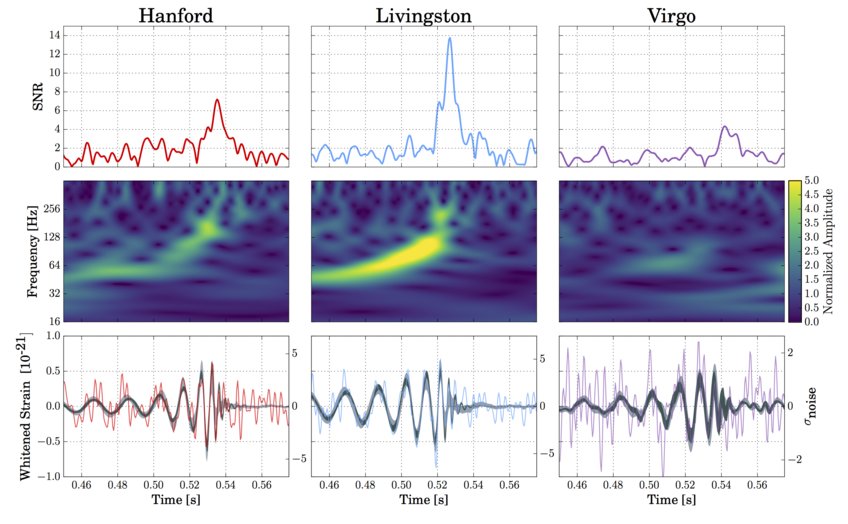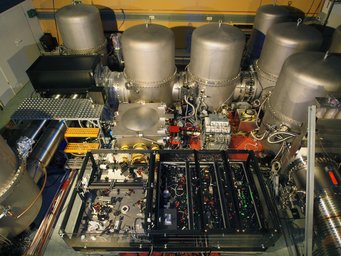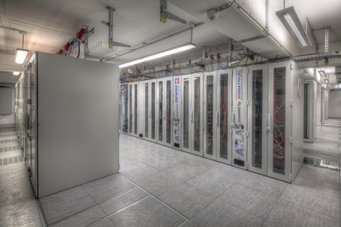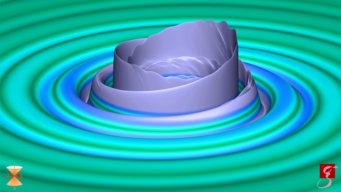Three ears listen even more accurately than two
Another pair of merging black holes observed: This time, three large detectors have caught the gravitational wave
From August 1st to August 25th, the Advanced Virgo gravitational wave detector in Italy took data jointly with the two US Advanced LIGO observatories and the smaller German-British GEO600 instrument. On August 14, 2017, a gravitational wave generated by two merging black holes was observed jointly by the LIGO-Virgo network. The triple detection significantly improved the measurement of both the sky position and distance of the black holes. Researchers at the Max Planck Institute for Gravitational Physics (Albert Einstein Institute/AEI) in Potsdam and Hannover and at the Leibniz Universität Hannover have again made crucial contributions to the discovery.
During a press conference in Torino, the Virgo and the LIGO Scientific Collaborations today announced the first joint detection of a gravitational wave with all three large detectors. On August 14, 2017, at 10:30:43 UTC, the two Advanced LIGO detectors and the Advanced Virgo detector observed a gravitational wave signal, known as GW170814, generated by two coalescing black holes. This triple coincident event is the first joint LIGO-Virgo detection. The results are accepted for publication in Physical Review Letters.
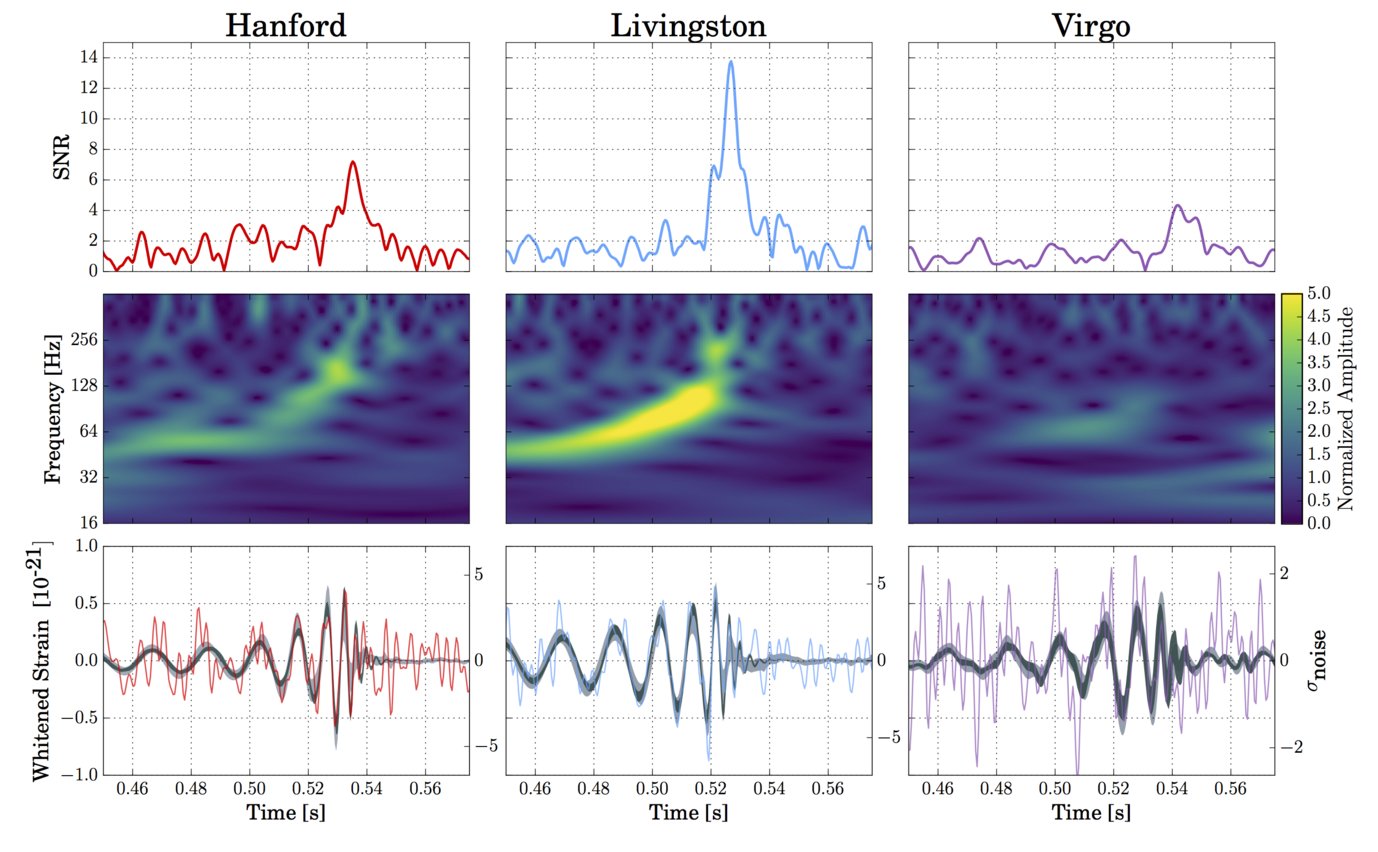
Merger of two massive black holes
Detailed analyses showed that the gravitational wave signal was emitted by the inspiral and merger of two rather massive black holes of about 31 and 25 solar masses, similar to the first gravitational wave event ever observed. The merger happened at a slightly larger distance of about 1.8 billion light-years.
GW170814 arrived at the LIGO Livingston detector about 8 milliseconds before the LIGO Hanford detector and about 14 milliseconds before the Virgo detector. From this combination of arrival time delays, the direction towards the source can be determined. GW170814 could be localized to a patch of 60 square degrees (300 times the apparent size of the full moon) in the southern celestial hemisphere between the constellations Eridanus and Horologium. By comparing the measured waveform with predictions from General Relativity, scientists can estimate the distance to the black holes.
The first joint LIGO-Virgo observation of gravitational waves
“Gravitational wave astronomy is rapidly advancing. With a third large detector, we can even more accurately determine the position and distance of the gravitational wave sources. In collaboration with astronomers we can search more efficiently for electromagnetic and astroparticle counterparts of the sources and together advance into the new era of multi-messenger astronomy,“ say Bruce Allen and Alessandra Buonanno, directors at the Max Planck Institute for Gravitational Physics, and Karsten Danzmann, director at the Max Planck Institute for Gravitational Physics and at the Institute for Gravitational Physics of the Leibniz Universität Hannover.
In the case of GW170814 a total of 25 astronomical observatories searched for electromagnetic radiation in the gamma, optical, infrared, x-ray, and radio wavelength ranges, as well as for neutrino emissions; as expected for stellar-mass black holes, none of the instruments observed any signal.
Developing and testing crucial detector technology with GEO600
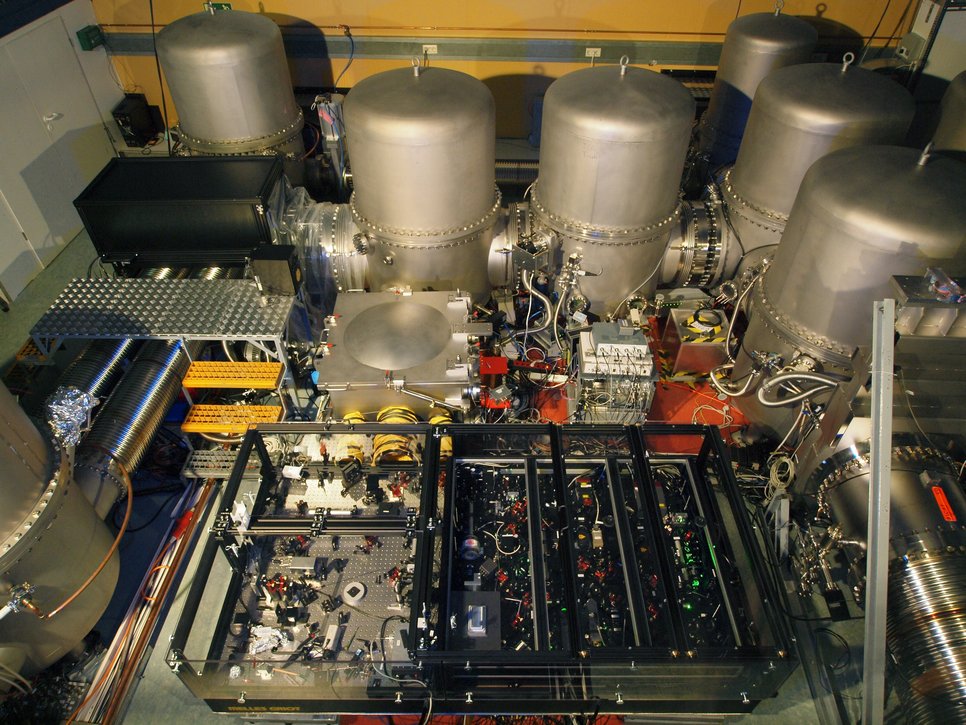
The GEO Collaboration, a team of Max Planck, Leibniz Universität Hannover and UK researchers, has been operating the GEO600 gravitational-wave detector south of Hannover, Germany, since the mid 1990s. GEO600 is a development center for novel and advanced technologies in the international gravitational-wave research community.
Many key technologies that enable the unprecedented sensitivity of LIGO and its discoveries have been developed and tested at GEO600. AEI researchers together with the Laser Zentrum Hannover e.V. also developed, built, and installed the high-power laser systems at the heart of the LIGO instruments. Crucial improvements in the optical measurement principle such as power and signal recycling were first demonstrated at high sensitivity in GEO600.
GEO600 is the only gravitational-wave detector worldwide using “squeezed light”, which in the future all ground-based gravitational-wave detectors will employ to further improve their sensitivity.
Data analysis methods and computing power for finding GW1700814
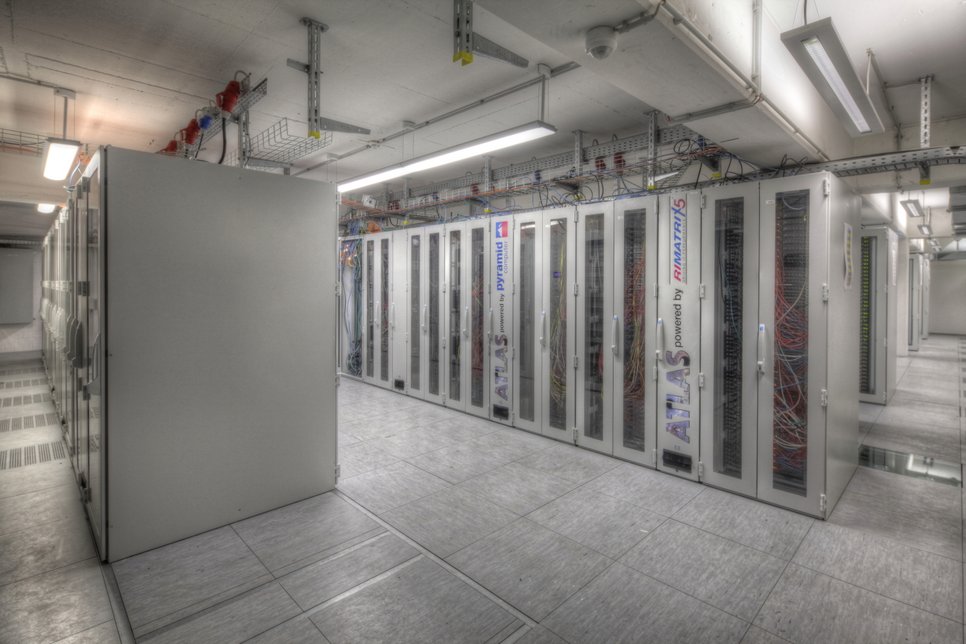
Members of the Observational Relativity and Cosmology division at AEI Hannover analyzed Virgo data to estimate the probability that the weak Virgo signal is caused by random noise fluctuations. They found the signal to be real with a probability of more than 99%. They also developed methods to clean the LIGO data from instrumental artifacts, and thereby significantly increased the LIGO sensitivity.
The Observational Relativity and Cosmology scientists developed and implemented many of the algorithms and software used in the analysis of the LIGO data. These analyses were used, for example, to establish the statistical significance of GW170814 and to determine its parameters. In addition, about 40% of the ongoing LIGO data analysis of data from the second science run “O2” was performed on the Atlas supercomputer operated by the division.
Waveform models again crucial to detect and interpret GW170814
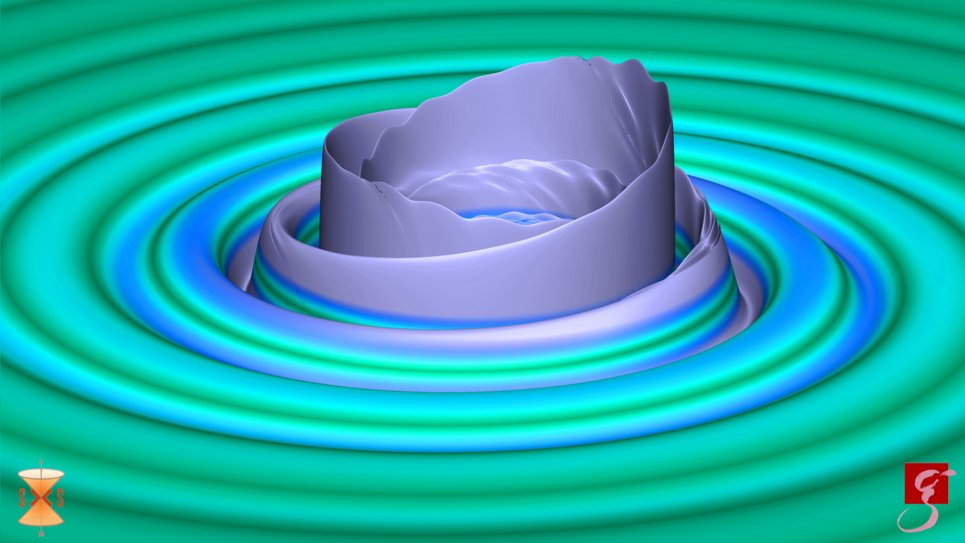
As with previous ground-breaking gravitational-wave observations the role of the Astrophysical and Cosmological Relativity division of the AEI in Potsdam was crucial in observing and interpreting GW170814.
A significant contribution was in developing and using the most accurate waveform models to both search for and characterize the source of GW170814. These models enabled scientists at the AEI in Potsdam, and LIGO-Virgo collaboration members, to measure the high significance of this observation, which used for the first time the full LIGO-Virgo network of three large detectors. As part of the follow-up analysis, waveform models developed by scientists at the AEI in Potsdam localized the source in the sky within 60 square degrees of the celestial sphere, and identified it as a pair of orbiting black holes, 31 and 25 times the mass of the Sun.
Members of the division at the AEI in Potsdam have continued to improve waveform models including new physical effects, such as eccentricity and tides for neutron stars, to shed light on binary’s formation scenarios and matter at extreme conditions with future observations.
LIGO and Virgo
LIGO is funded by the NSF, and operated by Caltech and MIT, which conceived and built the project. Financial support for the Advanced LIGO project was led by NSF with Germany (Max Planck Society), the U.K. (Science and Technology Facilities Council) and Australia (Australian Research Council) making significant commitments and contributions to the project. More than 1,200 scientists from around the world participate in the effort through the LIGO Scientific Collaboration, which includes the GEO Collaboration. Additional partners are listed at http://ligo.org/partners.php. The Virgo collaboration consists of more than 280 physicists and engineers belonging to 20 different European research groups: six from Centre National de la Recherche Scientifique (CNRS) in France; eight from the Istituto Nazionale di Fisica Nucleare (INFN) in Italy; two in The Netherlands with Nikhef; the MTA Wigner RCP in Hungary; the POLGRAW group in Poland; Spain with the University of Valencia; and EGO, the laboratory hosting the Virgo detector near Pisa in Italy.
